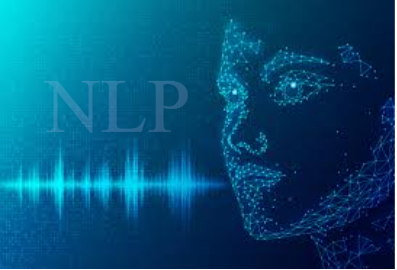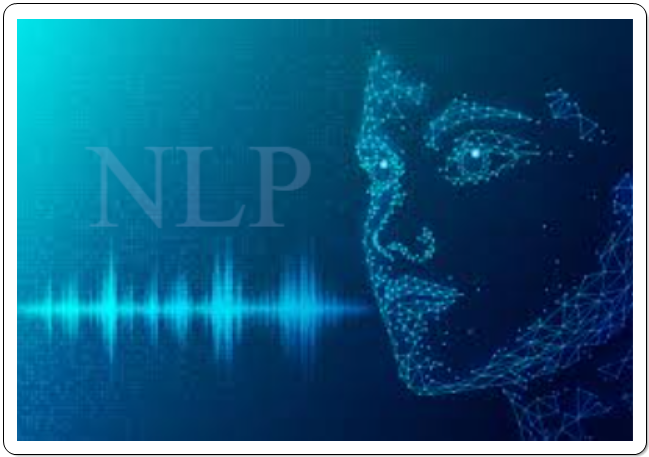NATURAL LANGUAGE PROCESSING

One effective method for bridging the gap between artificial intelligence and human language is natural language processing, or NLP. It makes it possible for computers and other digital devices to comprehend and communicate with text and speech in a manner that is comparable to human interaction by fusing linguistic subtleties with statistical analysis and machine learning techniques.
Important uses consist of:
Language Translation: Enables international communication by translating text between languages.
Voice Instructions: Allows for hands-free control by intelligently responding to commands.
Voice Recognition and Verification: This feature improves security and offers individualized customer service by authenticating users using distinctive voice patterns.
Text Summarization: Reduces extensive textual content into succinct summaries to facilitate effective decision-making.
Intention and Sentiment Analysis: Evaluates the voice or text’s underlying intention or sentiment to reveal customer preferences.
Content Generation: Produces material as needed, adapting to the individual tastes and demands of the user.
Beyond consumer applications, NLP has a profound impact on corporate solution creation and revolutionary transformation. It simplifies mission-critical procedures, increases worker productivity, and optimizes corporate operations. Voice-activated GPS units, digital assistants, speech-to-text dictation software, and chatbots for customer service all employ natural language processing (NLP). NLP has enormous potential to boost productivity, creativity, and efficiency as it develops.
What NLP Is Capable Of?
The OpenAI natural language processing programme GPT-3 predicts the following word in a phrase based on words that have come before it by utilizing AI and statistics. These language models, also known as foundation models, are employed in both basic analytics activities like sentiment evaluation and document categorization, and more complex jobs like query processing and report summarization. The first major language model, GPT-3, allowed it to do sophisticated tasks like programming and high school arithmetic problem solving. Humans have adjusted the most recent version, InstructGPT, to produce answers that are more in line with user intents and human principles.
In terms of writing, coding, and specific to discipline thinking, GPT-3 has demonstrated potential for enterprises. Microsoft has financed OpenAI, the company that created GPT-3. Codex is a language model based on GPT-3 that can produce code from natural language input and power applications such as Copilot for Microsoft’s subsidiary GitHub. Developers are expected to perform their work differently as a result of this revolutionary potential.
One new field of AI research is foundation models, which can handle several kinds of data, including video and picture files. With training in both language and picture recognition, OpenAI’s DALL·E 2 produces detailed, text-based representations of fictional environments or objects. Like the industrial revolution, economists anticipate that foundation models will have an impact on every aspect of the economy and spur further growth.
Role of NLP in Machine Learning
Important subfields of artificial intelligence that have gained importance recently include machine learning and natural language processing. In order for an artificial agent to become intelligent, natural language processing (NLP) is essential to its ability to take in more accurate information from its surroundings and behave in a way that is intuitive for users. An AI system can evaluate input data and make more accurate action predictions thanks to machine learning algorithms.
Applications of natural language processing (NLP) include spam mail identification, where machine learning algorithms can learn and create generic rules, whereas older methods need to hardcode each characteristic and variable. Artificial Neural Networks are the main focus of Deep Learning, a subfield of machine learning algorithms (ANN). Deep learning approaches have shown to be widely used and yield good results because of their capacity and adaptability to make important architectural decisions.
In machine learning, natural language processing (NLP) refers to a system’s capacity to comprehend and manipulate human languages like Hindi and English. Natural Language Processing has made it possible for computer systems to comprehend languages other than just zeros and ones.
Because NLP is so user-friendly and enables voice commands to be used to interface with sophisticated technology, it has gained widespread adoption in recent years. But processing language for interaction also heavily relies on machine learning.
The advantages and disadvantages of using NLP in business must be carefully balanced. It can result in lower expenses, faster wait times, and happier customers, but it also necessitates the laborious training of AI models and the unpredictability of machine learning. The fields in which natural language processing (NLP) finds widespread and increasing use are translation, speech recognition, sentiment analysis, chatbots, question-answering structures, market research, automatic categorization of text, and grammar correction. By combining AI’s ability to enhance human capacities, machine learning and natural language processing (NLP) have the potential to revolutionize technology interaction. NLP has the power to transform sectors, increase productivity, and open up novel possibilities in the digital era as it develops further.
How do NLP and AI relate?
Natural language processing (NLP) and artificial intelligence (AI) are closely related fields. AI’s intelligence stems from its capacity to comprehend and interpret human language. AI’s performance in Turing tests is becoming better as deep learning develops, and Ray Kurzweil, the director of engineering at Google, believes that by 2029, robots would reach “human levels of intelligence”. Artificial consciousness is a topic where philosophical investigation and practical application come together to examine the prospect of imbuing robots with consciousness and personal experience. However, the complexity of human behavior is a problem for AI. The search for artificial consciousness challenges our comprehension of cognition and awareness as AI and NLP develop, opening up new vistas for research and investigation. In addition to redefining technical innovation, the combination of AI and NLP invites thoughtful considerations of the nature of intelligence, and the human-machine interaction.
Through the investigation of human-machine interaction, the development of Natural Language Processing (NLP) and Artificial Intelligence (AI) is having a major impact on the future of technology and society.
